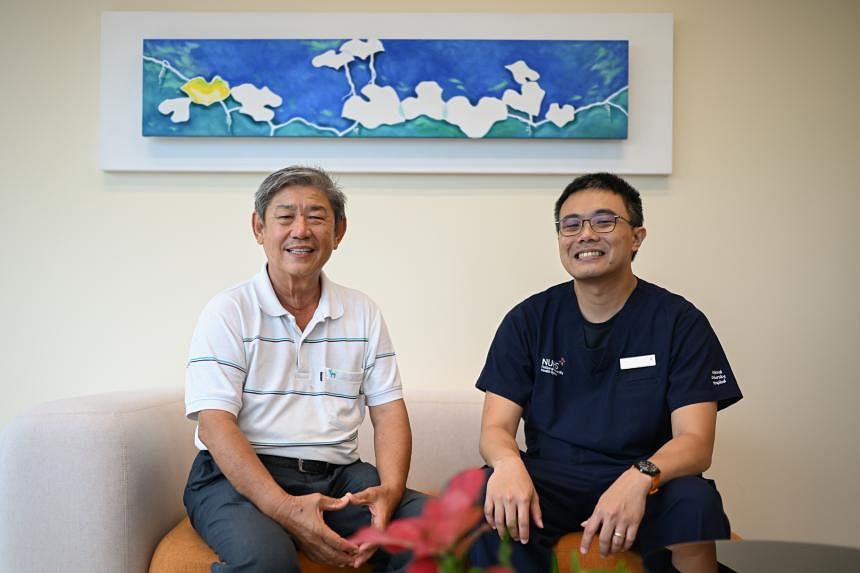SINGAPORE – Knowing ahead of time when there will be a surge of patients at the emergency department and whether there are beds available will allow the National University Hospital (NUH) to allocate manpower easily.
That is why the hospital’s Emergency Department has turned to Pathfinder, an artificial intelligence (AI) project that provides real-time insights into waiting time and bed occupancy rates, which can guide staff in decision-making within a chaotic emergency environment.
Pathfinder tracks waiting time and predicts daily patient turnout up to seven days in advance, said National University Health System (NUHS) deputy group chief technology officer Ian Mathews.
Pathfinder is hosted on the health group’s Endeavour AI platform, which provides live medical data of patients across NUHS hospitals and clinics.
While AI helps streamline processes, reduce inefficiencies and improve patient care, “it does not take over”, said Dr Mathews, who is also a senior consultant in NUH’s department of emergency medicine.
According to the Ministry of Health website, the daily median waiting time for admission at the emergency department of public hospitals was between two hours and 24 hours in the first week of September.
“This project empowers us to make more informed decisions about how best to allocate resources, including manpower, hospital bed utilisation and the coordination of essential support services, such as NUHS@Home programme,” said Dr Mathews.
NUHS@Home is a programme that offers patients the option of receiving acute hospital care and services at home instead of the hospital.
Also hosted on Endeavour AI is a new AI tool that flags hypercalcaemia – high calcium levels in the blood – to doctors in real time, prompting quicker interventions for patients.
Hypercalcaemia is usually a result of overactive parathyroid glands, which control the body’s blood calcium levels.
If not treated in a timely manner, patients may suffer complications such as osteoporosis and fractures, kidney stones, and even potentially sudden cardiac death.
CalSense – which is short for calcium sensing – was developed by NUHS to gather, process and display the results of patients’ blood tests.
“It flags cases that require prompt interventions across our network of hospitals, national speciality centres and polyclinics in real time, reducing the administrative work of doctors and expediting medical care,” group chief technology officer Ngiam Kee Yuan said.
Associate Professor Ngiam, who also heads the division of general surgery (thyroid and endocrine surgery) at NUH, said overseas data has shown it takes four years on average after symptoms of hypercalcemia appear before surgical treatment.
CalSense has shortened this.
Construction supervisor Poh Chin Sheng, 66, benefited from CalSense. He had gone to Choa Chu Kang Polyclinic in January 2023 after feeling fatigued, dizzy and numb in his legs.

Mr Poh was sent to the emergency department at NUH and later given an appointment with an endocrine specialist for March, during which CalSense detected a high amount of calcium in his blood.
He was diagnosed with parathyroid cancer, a rare cancer of the glands located near the thyroid in the neck, and was recommended surgery.
“Should the intervention have been delayed, the spread of the disease would have been catastrophic because there is little alternative treatment other than surgery,” said his surgeon, Dr James Lee.
Pointing to the scar on his neck, the father of three believes both CalSense and Dr Lee saved his life. He said he never thought that just feeling tired would end up in a cancer diagnosis and surgery.
Between January and July 2023, a total of 26,000 blood tests on calcium levels were done at the different institutions under NUHS. CalSense flagged 1,600 of these as abnormal, leading to medical interventions.
The team is looking to expand CalSense to flag other diseases such as colorectal cancer and diabetes early.


